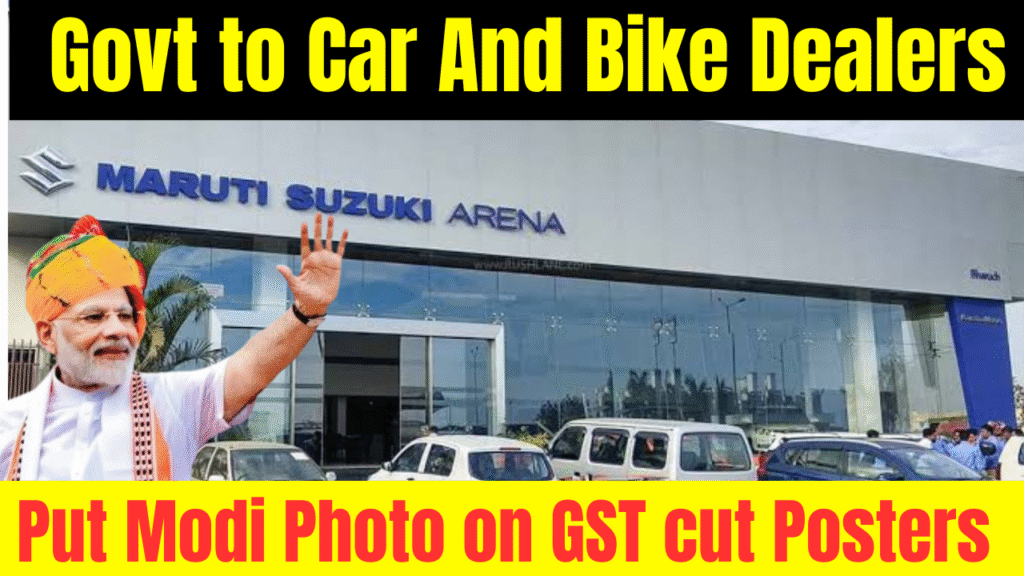The Ministry of Heavy Industries (MHI) has instructed automobile manufacturers to ensure that every car and two-wheeler dealership across the country displays posters highlighting the impact of the GST 2.0 tax rationalisation on vehicle prices. The directive, communicated through the Society of Indian Automobile Manufacturers (SIAM), requires companies to create posters that clearly show the price difference before and after the new GST regime and also carry the photograph of Prime Minister Narendra Modi.
The GST Council’s recent tax overhaul has been described as one of the most significant changes for the automobile sector in recent years. Small cars, defined as those under four metres in length with petrol, CNG, or LPG engines up to 1,200 cc and diesel engines up to 1,500 cc, now attract GST of 18 percent compared to the earlier effective tax of around 29 to 31 percent. Larger cars, including SUVs with engines above 1,500 cc and higher ground clearance, will now be taxed at 40 percent instead of about 50 percent earlier when the compensation cess was included. The withdrawal of the cess has simplified the structure and reduced the overall tax burden across categories. Two-wheelers, which were earlier taxed at 28 percent, are also now brought under the 18 percent slab, a move expected to lower costs for millions of buyers.
Also Read:
Honda Activa and All Other Models Become Cheaper After GST Cut
While the mandate covers passenger cars and two-wheelers, luxury carmakers have been exempted from the requirement to display posters. Manufacturers have already begun designing the material and submitting drafts for government approval before printing and distributing them nationwide. Industry estimates suggest the total cost of creating and deploying the posters could be in the range of ₹20–30 crore.
Automakers and dealers, however, are raising questions about the logistics of the rollout. Many are uncertain whether posters in regional languages will each require fresh approval from the ministry or whether a single master design will be accepted. It also remains unclear whether the cost of printing and distribution will be borne by manufacturers, dealers, or shared between both. For dealers, another concern is that existing stocks procured before the GST change cannot always be repriced easily, even as new customers expect the reduced rates to reflect immediately.
The government has positioned this initiative as a consumer-friendly measure designed to increase transparency. By showing price comparisons side by side, officials believe customers will be able to clearly see the benefits of GST 2.0. With the festive buying season approaching, the ministry expects the campaign to boost footfall and sales.
Also Read:
Royal Enfield Electric Himalayan (Him-E) Spotted Testing — Launching Soon!
At the same time, the political angle of the order has stirred debate. The directive that every poster must display the Prime Minister’s photograph has drawn criticism from opposition parties, who argue that tax reforms are being used as a vehicle for political promotion. Industry insiders also caution that the administrative burden of approving, printing, and deploying thousands of posters within days could create confusion.
Despite these concerns, the government has made it clear that the posters must be displayed at dealerships by the end of the week. The auto industry is now moving quickly to comply, even as questions remain over the finer points of implementation. For consumers, the immediate takeaway is that cars and two-wheelers have become significantly more affordable thanks to GST 2.0, with small vehicles seeing tax rates drop from nearly 30 percent to 18 percent, larger cars from about 50 percent to 40 percent, and two-wheelers from 28 percent to 18 percent.
Also Read:
Hero MotoCorp Passes on GST 2.0 Savings — Up to ₹15,743 Off!

